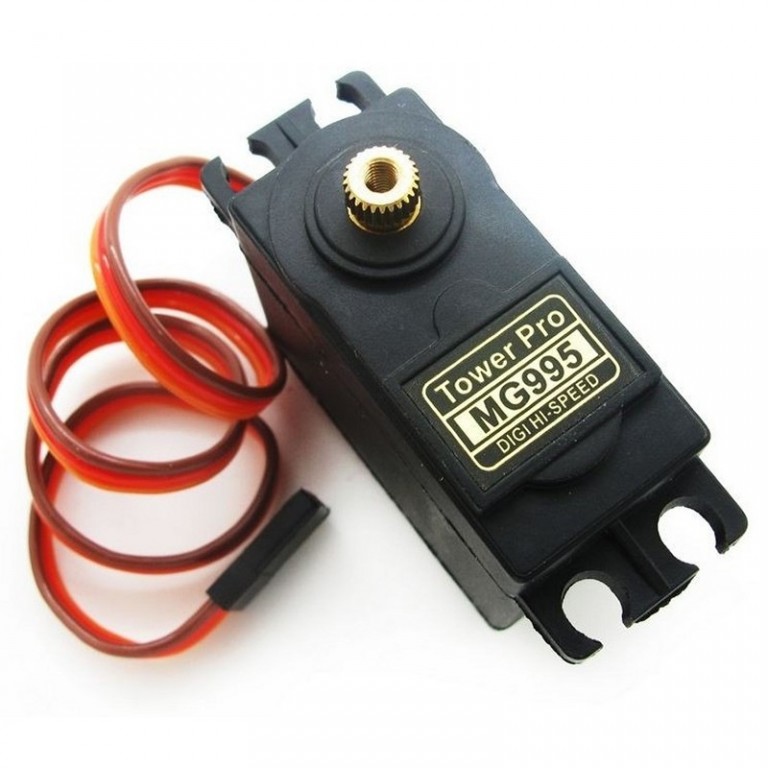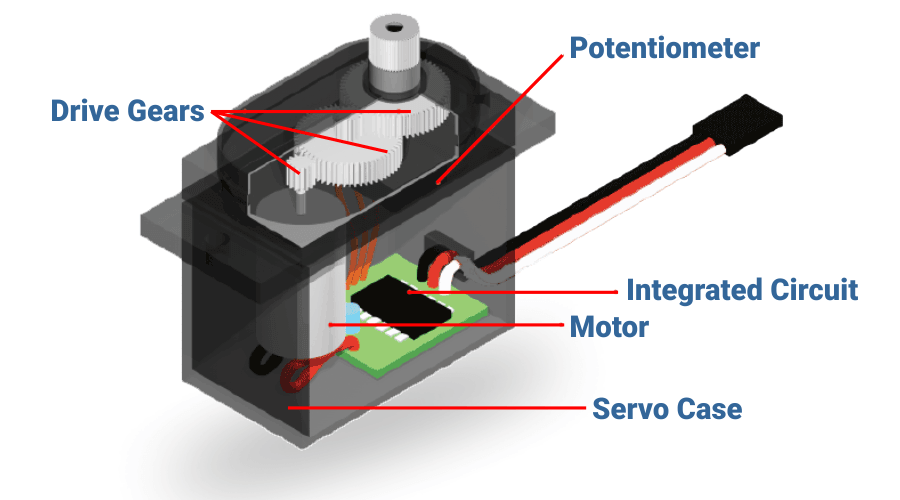What is Servo Motor – Advantages, Disadvantages Applications
Here’s a look inside how a Servo Motor operates? Its advantages, disadvantages and its applications.

Selection of an electric motor is fundamental for any electro-mechanical project. When the project requires maximum precision, then commonly we think about the servo motor. In this article, we are going to discuss about what is servo motor, basics of servo motor, advantages, disadvantages, applications and construction of servo motor.
Also, we will know, why they are one of the basic devices in robotics and industrial sectors that require highly precise motions.
What is Servo Motor?
Servo motor is a rotary actuator or linear actuator . It allows for precise control of angular or linear position, velocity and acceleration. It consists of a suitable motor coupled to a sensor for position feedback. It also requires a relatively sophisticated controller. Often a dedicated module designed specifically for use with servo motors.
It is an electrical device which can push or rotate an object with great precision. If you want to rotate an object at some specific angles or distance, then you have to use servo motor. It is just a simple motor which run through servo mechanism.
If the motor uses the DC power as supply then it is the DC servo motor. If the motor uses an AC power as supply then it is an AC servo motor. We can get a very high torque servo motor in a small and light weight packages. Due to these features they uses in many applications like toy car, RC helicopters and planes, Robotics, Machines etc
MUST READ BLOG POSTS ON SERVO MOTOR:
- What are the types of servo motor?
- Servo Motor Working Principle
- Interfacing servo motor using Arduino
Construction of Servo Motor
This motor is a closed-loop mechanism that incorporates positional feedback in order to control the rotational or linear speed and position.
This motor is actually an assembly of four things:
- Normal DC motor- That is in charge of generating the motion through its shaft.
- Gear reduction unit/gear box
- Potentiometer
- Control circuit
The DC motor connects with a gear mechanism which provides feedback to a position sensor which is mostly a potentiometer.
It is connected to the central shaft, and informs at all times the angle in which the motor’s shaft is available
From the gear box or gear reduction unit, the output of the motor delivers via servo spline to the servo arm. the gear box is formed by gears which may increase or decrease the speed and torque.
The standard servo motor uses the plastic gear whereas the high power servo motor uses the metal gear.
A control circuit allows for control over the motor’s motion by sending electric pulses
Motor consists of three wires- a black wire connected to ground. A white/yellow wire connected to control unit. And a red wire connected to power supply.
Advantages of Servo Motor
- If a heavy load places on the motor, the driver will increase the current to the motor coil as it attempts to rotate the motor. Basically, there is no out-of-step condition.
- High-speed operation is possible.
Disadvantages of Servo Motor
- Since the motor tries to rotate according to the command pulses, but lags behind. it is not suitable for precision control of rotation.
- Higher cost.
- When stopped, the motor’s rotor continues to move back and forth one pulse. So that, it is not suitable if you need to prevent vibration
Applications of Servo Motor
It uses in the applications requiring rapid variations in speed without the motor getting overheated.
- Industries, they uses in the machine tools, packaging, factory automation, material handling, printing converting, assembly lines. In many other demanding applications robotics, CNC machinery or automated manufacturing.
- uses in radio controlled airplanes to control the positioning and movement of elevators.
- In robots because of their smooth switching on and off and accurate positioning.
- In the aerospace industry to maintain hydraulic fluid in their hydraulic systems.
- uses in many radio controlled toys.
- used in electronic devices such as DVDs or Blue ray Disc players to extend or replay the disc trays.
- used in automobiles to maintain the speed of vehicles
Hope this article helps you to understand the basics of servo motor. We at Robu.in hope that you found it interesting and that you will come back for more of our educational blogs.










Very much appreciable, your sweat becomes sweet to knowledge to all indeed.